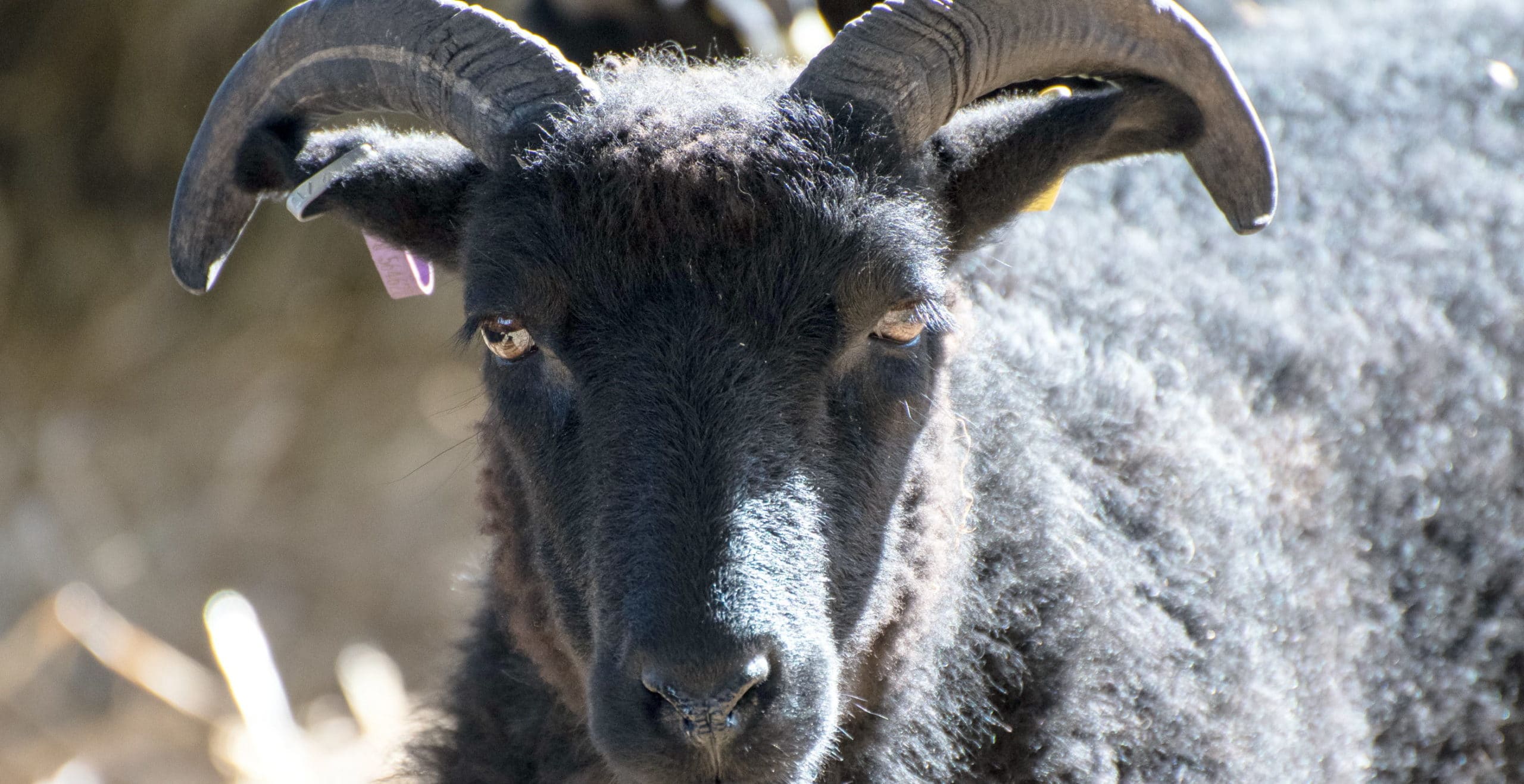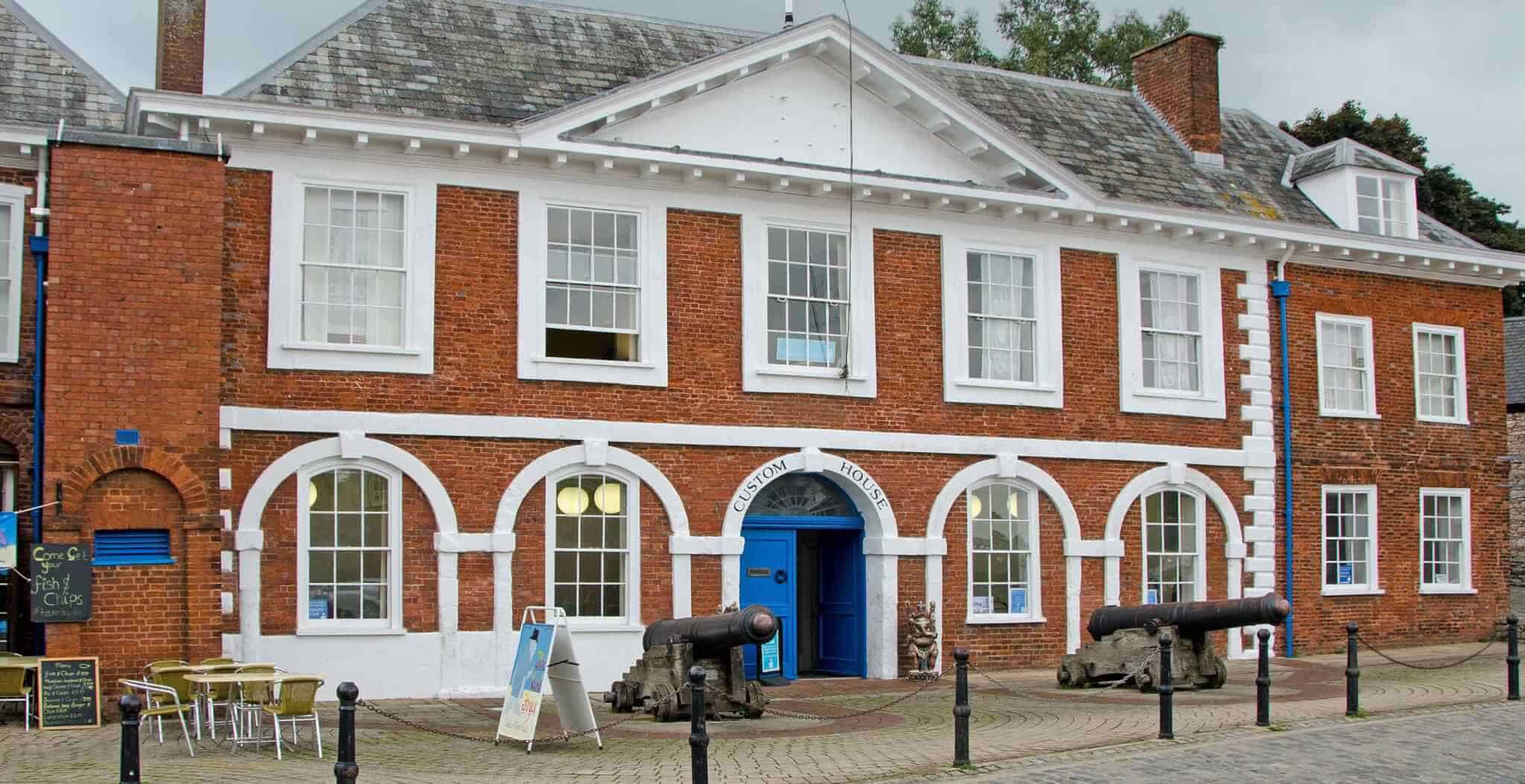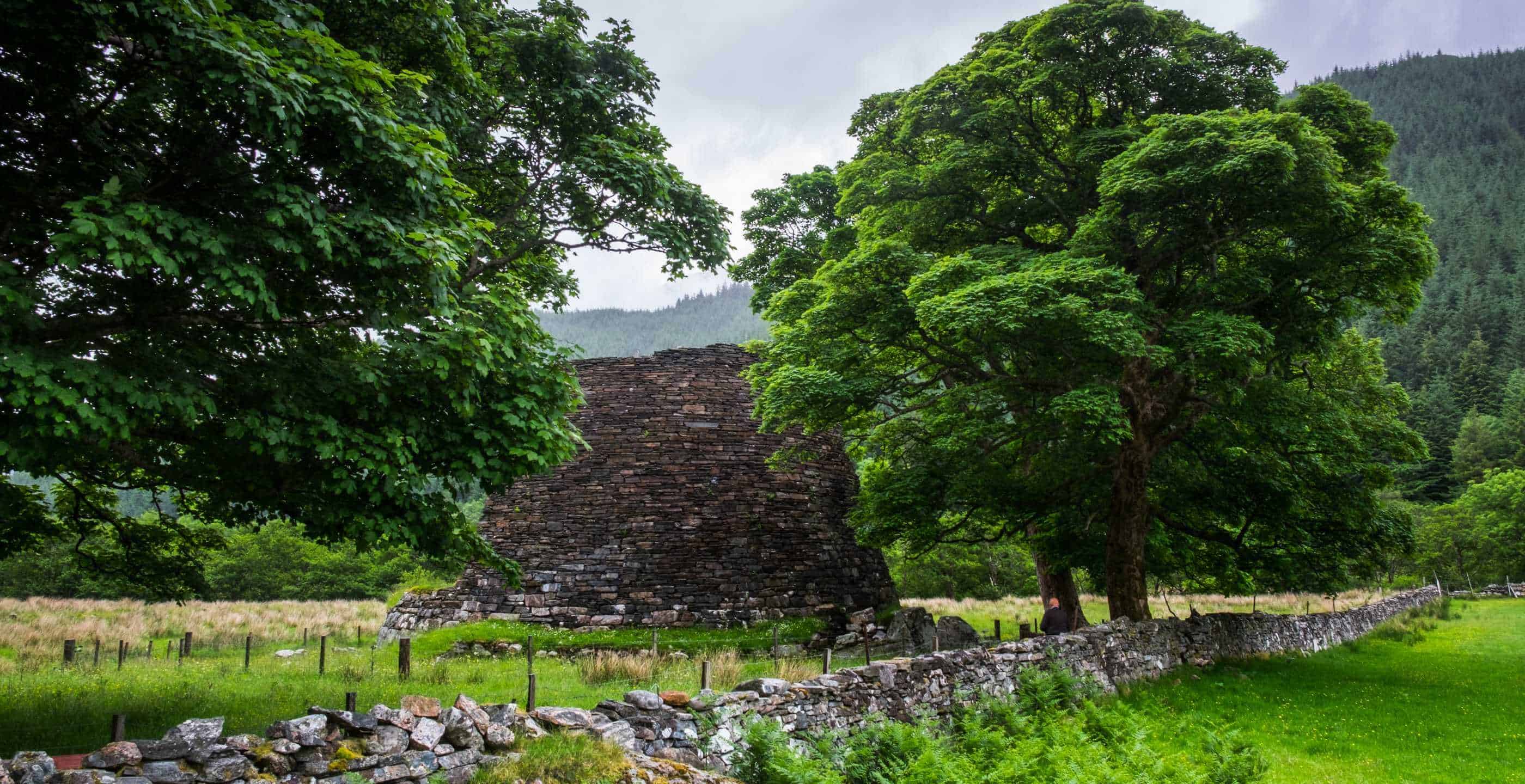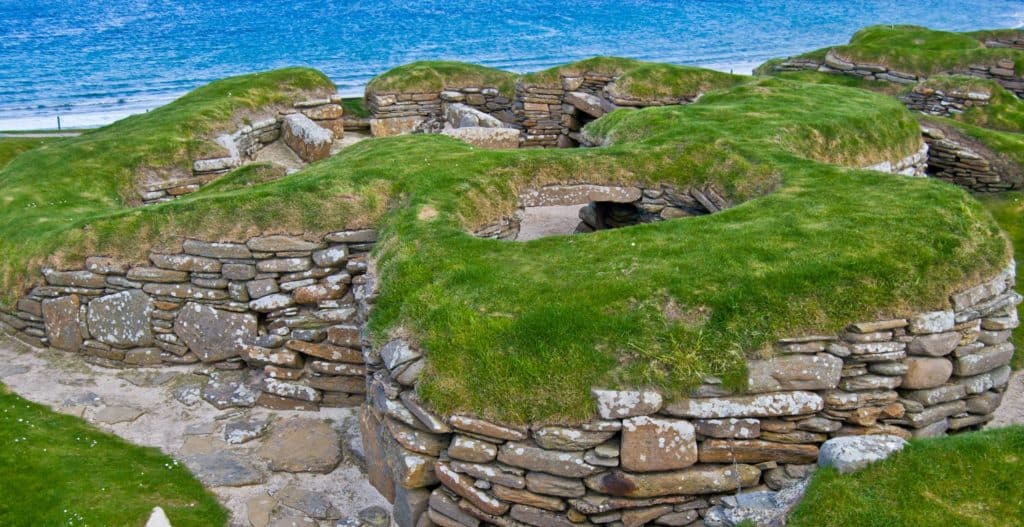On a remote Scottish Island called ‘North Ronaldsay’ off the Northern coast of Orkney high up in the North Sea, is a peculiar stone dyke which encircles the entire 3 mile long island. This dyke was built in 1831 because of a peculiar and rare breed of sheep, the North Ronaldsay sheep. The dyke is 13 miles long and 6 feet high, and separates the interior of the island from the beach all the way around. Its purpose? To protect the inner island from ravenous marauders, in this case, the sheep! The North Ronaldsay sheep are without doubt the rarest and most unusual in the United Kingdom. Not only that, they are also a living link that stretches over 5000 years into Orkney’s past.
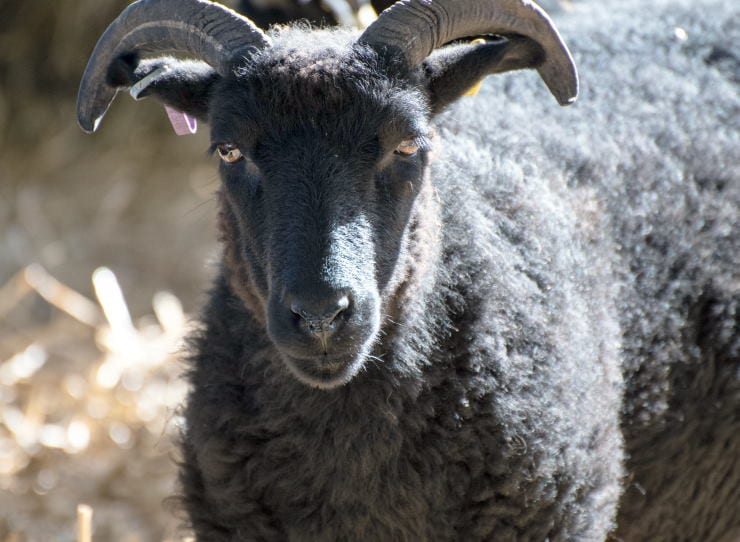
North Ronaldsay is so far North that it is actually higher in the northern hemisphere than the Southernmost tip of Norway. Ronaldsay islanders, of which there are only around 50 today, down from about 500 in the mid 19th century, built this dyke in the 1800s in order to prevent the existing sheep from overgrazing inland, decimating their crops and potentially ruining the local economy. The Laird at the time felt that grazing cattle were more profitable, therefore the sheep were consequently confined to the beach. This wasn’t a problem for these hardy wee beasts and they soon adapted to their new surroundings and their new diet, which was made up of the only available vegetation in abundance: seaweed! The North Ronaldsay sheep still exist on a diet that is 80% seaweed today. This is incredibly rare for a mammal. In fact one of the only other seaweed eating creatures is the Galapagos Marine Iguana, making the North Ronaldsay sheep unique indeed!
Scientific studies of the breed’s ancestors have actually shown that seaweed contributed to their diet as early as 5000 years ago! The sheep themselves are of the North European Short-Tailed variety. They most likely arrived in Orkney thousands of years ago from the Caspian through the Baltic and then Sweden and Norway to Orkney. There were bones found on Skara Brae from the current breed’s ancestors which dated back some 5000 years, showing just how long these sheep have called Orkney home. Their genetics are also largely unchanged from this original species which add to their rarity value. Cross-breeding was obviously somewhat limited on an isolated island in the middle of the North Sea! Therefore these animals really are a living link into history.
The sheep have eaten seaweed as the major part of their diet since the dyke was built and they became exclusively shore dwellers. One of the sheep’s favourite seaweeds to eat is called Dulse.
Historically Dulse has also been eaten by humans as a food and used as a medicine. In fact, in 17th century Northern Scotland Dulse was considered a cure for everything from scurvy to hangovers!
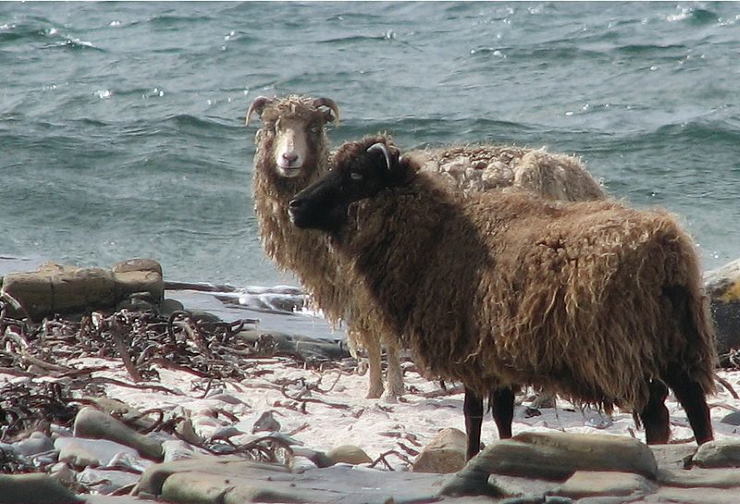
The animals eat the seaweed at low tide and then escape further up the beach to ruminate during high tide. The best time for seaweed is after a storm, as more of it is washed ashore in rough seas and high winds. Therefore these sheep have evolved to be a particularly hardy breed, even living outside on the shore all winter, happily eating the seaweed deposited on the beach by the churning waters. It is no wonder that these sheep are known to be small, hardy, stubborn and pretty feisty!
Not only rare and unusual, the sheep are central to the island’s economy as well; their wool and meat is sold and the uniqueness of the sheep themselves draw tourists every year. The meat of the sheep in particular is of a very high standard and in great demand. It has a unique gamey flavour due to the sheep’s unusual diet. In fact, it was North Ronaldsay mutton that was used by celebrity chef Cyrus Todiwala for the Diamond Jubilee Celebrations, and was served to Her Majesty Queen Elizabeth II and the Duke of Edinburgh. You can even recreate the very same dish using the recipe from The Orkney Sheep Foundation’s website today, if you can get your hands on some of the delicious North Ronaldsay mutton that is.
Their popularity and fame aside, the sheep have been facing some difficult challenges of late, namely the destruction of their dyke. The population of North Ronaldsay was steadily decreasing, and those still living on the island found it harder and harder to be able to maintain the dyke that kept the sheep in their (now) natural environment. If sheep escape into the inner island there are two potentially devastating consequences. The first is damage or possibly even death to the sheep themselves. The sheep have evolved to extract copper from the seaweed they eat in a particularly efficient manner, and were they to return to existing on a majority grass diet, the amount of copper that they extract would poison them. Secondly, if they were to accidentally interbreed with another species it would change their unique historical genetic make-up, potentially severing the direct link into Orkney’s past. Therefore the dyke is absolutely essential for the survival of the species.
One effective solution was introduced in 2016, the creation of ‘The North Ronaldsay Sheep Festival’, where volunteers would come and help to rebuild the dyke over a two week period in the summer. This proved successful, but still not enough, as the dyke is almost continuously ravaged by the raging storms and winds of the far north. Too much of the dyke was being damaged to keep up with repairs. The solution was to advertise for a dedicated warden to maintain the dyke and consequently protect the sheep. The islanders found just such a person and they were hired at the end of 2019. There is now a dedicated warden who, with the help of locals of course, will look after this historical treasure. The dyke is so valuable to the island’s history and the sheep’s survival that it is actually a Grade A listed historical monument, which puts it in the same category as Edinburgh Castle!
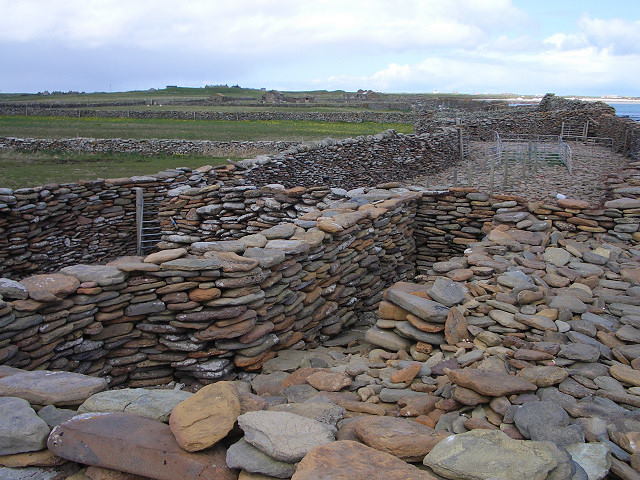
The sheep are allowed inside the island, but only for special occasions, such as lambing. This is done by the traditional communal shepherding method of punding. Sheep are herded into stone structures called punds, where the owners of each sheep can once again work out who’s who. The female sheep are kept inland from April through to about August during lambing. When the lambs are old enough to join the rest of the flock at the water’s edge, they are then herded back down to the beach. Even during their inland stay seaweed is still included in their diet.
There are only around 3000 of these amazing animals left, and as such they have been listed as ‘vulnerable’ by the Rare Breeds Survival Trust which was set up to protect Britain’s indigenous and primitive species in 1973. However, luckily with the introduction of a dedicated warden and the sheep festival, their ‘vulnerable’ status and the popularity of the wool and meat that they produce, not to mention the tourists interested in these remarkable beasts, there is still a chance these sheep can continue to thrive on North Ronaldsay as they have done for thousands of years. After all, where else in the world can you see sheep grazing on seaweed as seals lounge unconcerned alongside them on a beach?
By Terry MacEwen, Freelance Writer.
